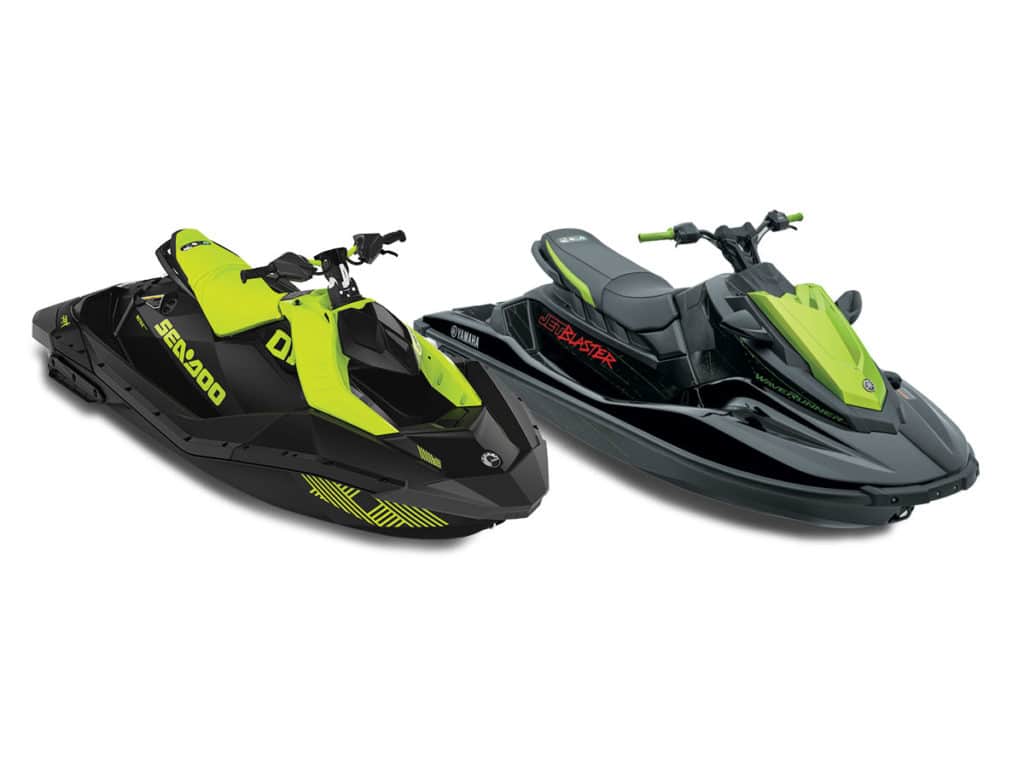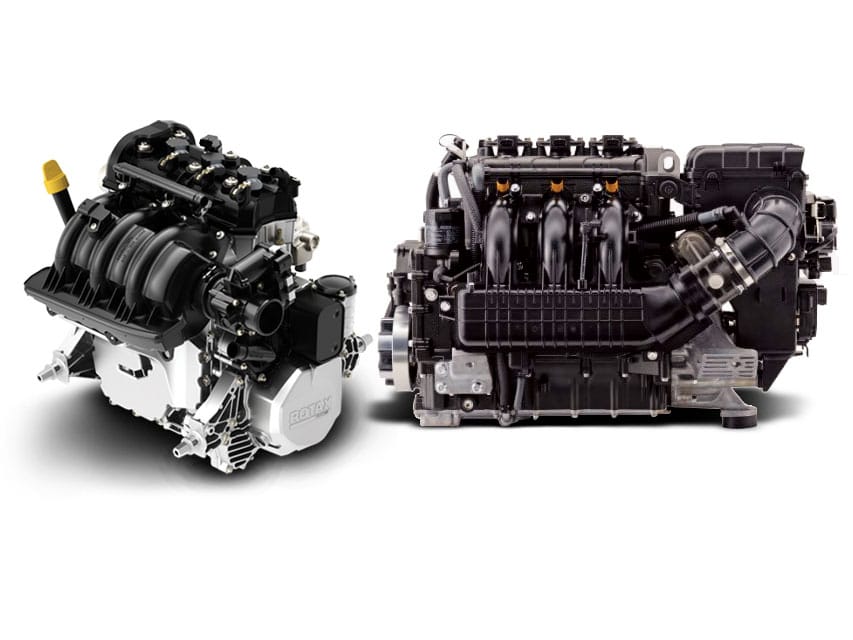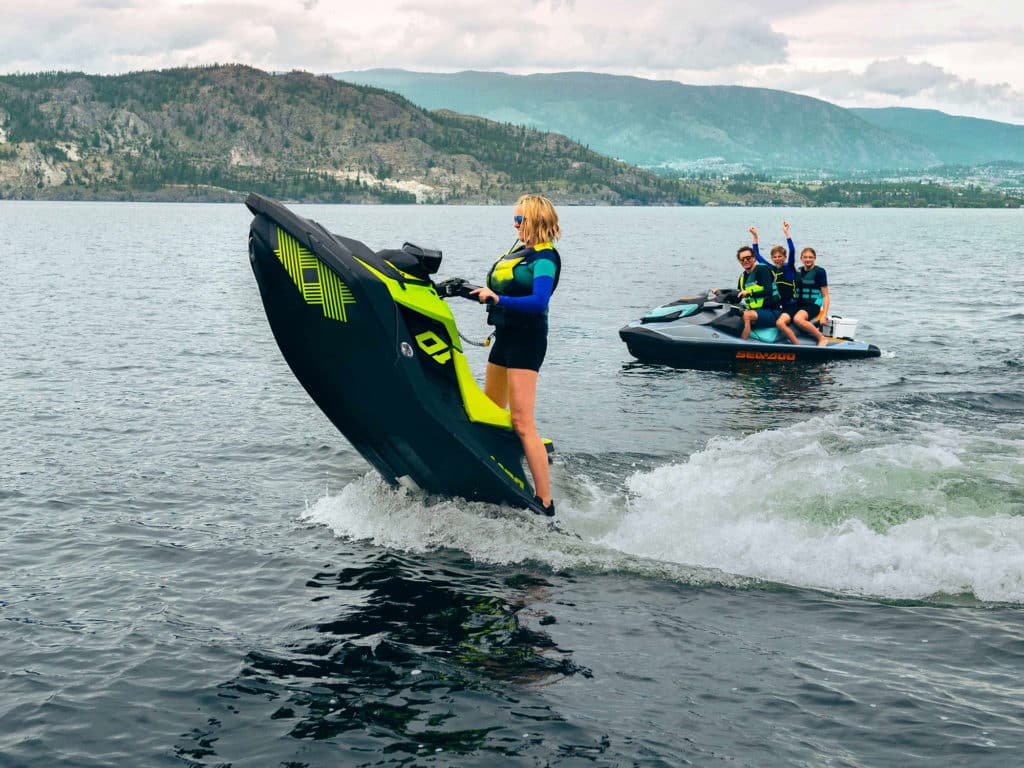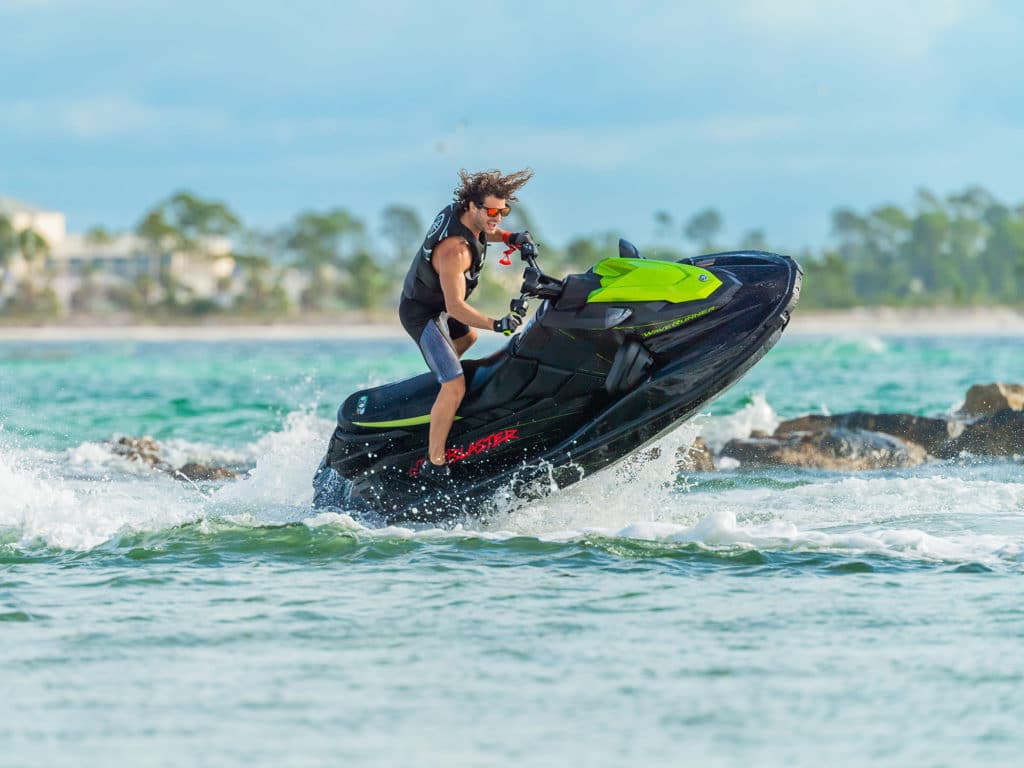
Sea-Doo’s Spark Trixx and Yamaha’s JetBlaster are two of the most fun, playful models in the PWC market. Though each follows a similar formula—advantageous horsepower-to-weight ratio and near-identical trio of freestyle-oriented add-ons—they retain distinct personalities on the water. Here’s how they compare.
Tale of The Tape
Both the Trixx and JetBlaster are based off models in the Rec Lite category: the current Sea-Doo Spark 2up and the former Yamaha EXR. Though Sea-Doo offers the Trixx in the Spark’s 3up version, the added length comes via a 10-inch hull extension that makes it more difficult to perform the original’s signature maneuvers. We’d argue that buyers looking for a true freestyle craft are most often riding solo and looking for best performance, so we opted to pair the best examples from each of these PWC manufacturers.

The difference is notable in the specs. The Trixx measures 110 inches long, 46.4 inches wide, weighs 428 pounds and uses a 90 hp, 899 cc Rotax 900 ACE engine. The JetBlaster is longer and narrower at 123.6 inches and 44.5 inches (length and beam, respectively), and heavier at 549 pounds. It is powered by a 110 hp, 1,049 cc Yamaha TR-1. Capacities favor the JetBlaster. Its passenger capacity tops out at 529 pounds, and fuel and storage capacities at a respective 13.2 and 7.7 gallons. The Trixx features a 352-pound passenger capacity (450 in three-passenger trim), 7.9-gallon fuel tank, and minimal 0.42-gallon glove box.
Both models come with electronic reverse and deceleration systems; Yamaha has the dual-throttle RiDE system and Sea-Doo has Intelligent Brake & Reverse. For a fairer comparison, we added the 7-gallon Front Storage Bin Kit ($199.99) to the Trixx, bringing its total to $8,998.99. The JetBlaster retails for $10,699.

Construction
Both manufacturers choose lightweight construction materials. Yamaha’s NanoXcel is a nano-engineered version of fiberglass-based sheet molding compound. Sea-Doo’s PolyTec is polypropylene- reinforced with glass fibers. NanoXcel is more rigid, but can be brittle in the event of a mishap. PolyTec flexes more, which allows it to absorb energy. The most obvious difference is cosmetic. Yamaha’s painted exterior has a glossy shine, while Sea-Doo’s molded-in color has a matte finish.
Freestyle Enhancements
Both craft get their freestyle feel via an almost identical set of features: leverage-providing footwell chocks; taller, wider handlebars; and extended electronic trim range. The JetBlaster’s handlebars are fixed, while the Trixx’s can raise or lower within a 2 3/8-inch span. The additional upward trim range (14 degrees on the Sea-Doo and 19 degrees on the Yamaha) increases each boat’s running angle, raising the bow and making each craft feel looser at the stern.

Ride Impression
Yamaha gets the nod in power delivery. It’s got the better punch out of the hole and a 54.8-to-50 mph top-speed advantage. With its more rigid hull, heavier weight and greater length, the JetBlaster can better handle rougher conditions. The Trixx is more at home in smaller, calmer waters. Although, in fairness, both craft prove popular with surf riders.
The JetBlaster offers more precise handling at neutral trim angles. Trimmed high, both craft display a bit of old-school drift in turns and slides; spray-flinging cutbacks and 180 spins are possible. The Yamaha’s additional power makes it the better wave jumper. The Sea-Doo counters by performing unique tricks like wheelies and tailspins.
Read Next: The Evolution of Personal Watercraft
Final Word
The deciding factor between the two craft will likely come down to which of the above traits you prefer. The JetBlaster darts around the water with a powerful kick and leaps out of the water with gusto. It’s the more aggressive and versatile machine. The Trixx feels smaller and better suited to calmer waters, but it’s the more playful craft. There’s also no denying the appeal of its ability to pull off tricks previously possible only on stand-up craft.
Ultimately, both are affordable and fun. In short, they’re cheap tricksters that are a treat to ride.









